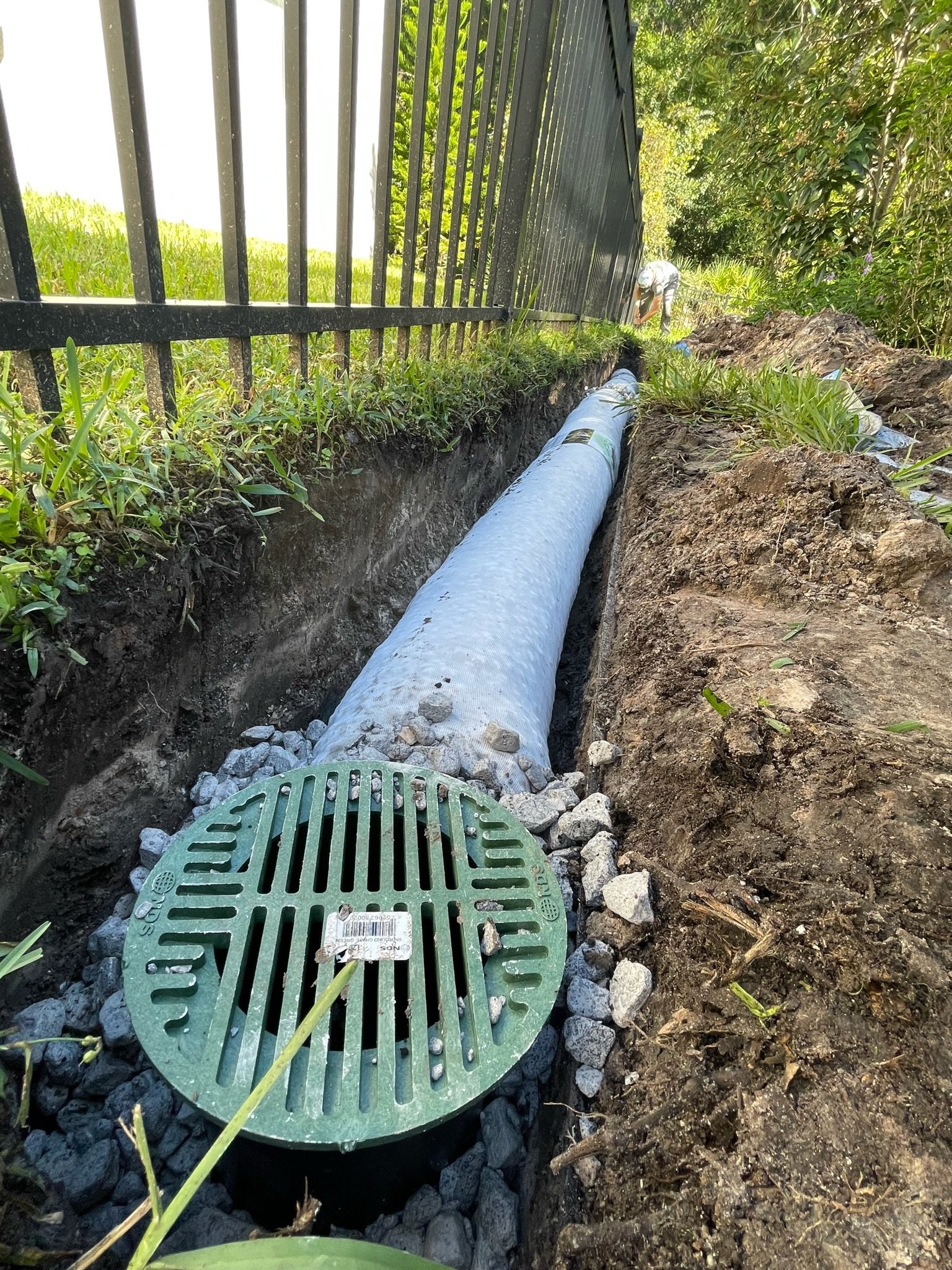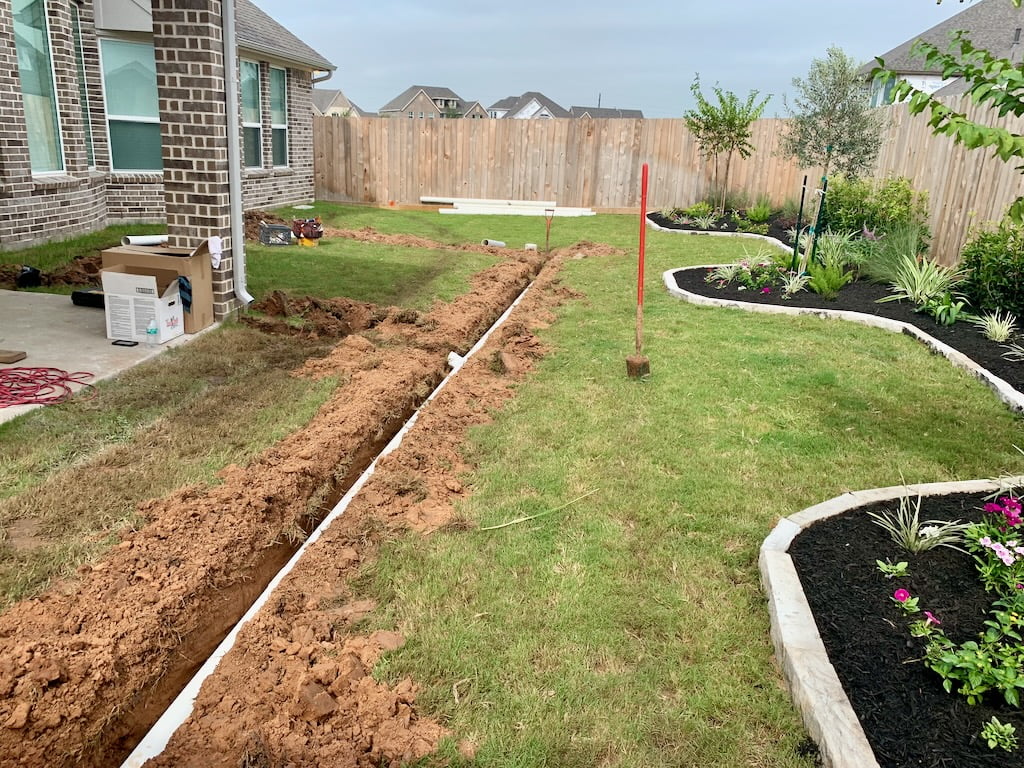Understanding the Relevance of a Septic System French Drainpipe for Effective Wastewater Management
The combination of a septic storage tank French drain system plays a pivotal duty in reliable wastewater management, yet its value is usually neglected. Comprehending the mechanics and advantages of such a system can illuminate its vital function in stopping dirt saturation and enhancing groundwater top quality.
What Is a Septic System French Drainpipe?
A septic tank French drain is a specific water drainage system designed to handle wastewater and stop flooding in locations where conventional drain methods might be insufficient. This system incorporates the performances of a standard sewage-disposal tank with a French drain, enabling efficient wastewater treatment and effective water diversion.

Created making use of perforated pipes stocked gravel trenches, a French drainpipe assists in the movement of water away from crucial locations. It permits the infiltration of excess water into the surrounding dirt, advertising effective drain while securing the septic system's stability. The mix of these 2 systems is especially beneficial in regions with hefty rains or bad drainage, making sure the long life and functionality of wastewater management systems while protecting public wellness and the atmosphere.

How It Works in Wastewater Administration
In wastewater administration, the combination of a septic storage tank and French drainpipe plays an important role in making certain reliable therapy and disposal of sewage. The septic container acts as the first line of defense, where wastewater goes through preliminary therapy with sedimentation and anaerobic food digestion. Solids resolve near the bottom, developing sludge, while lighter products, such as oil and oils, float to the top, developing a scum layer. This procedure reduces the organic lots of the wastewater prior to it relocates forward.
When the wastewater is clarified, it flows into the French drain system, which is created to help with more treatment and safe dispersal. The French drain includes perforated pipes buried in gravel or rock, enabling cured effluent to percolate into the surrounding soil. This natural filtering procedure help in the elimination of pathogens and nutrients, promoting groundwater recharge and decreasing the danger of surface contamination.
With each other, the septic tank and French drain create a lasting technique to wastewater monitoring, minimizing environmental influence while making certain compliance with wellness regulations. This incorporated system not just safeguards public health but likewise maintains the stability of local ecosystems.
Advantages of a French Drain System

The French drain system provides many advantages that enhance both wastewater administration and environmental management. Mainly, it efficiently reroutes water away from important areas, lowering the danger of flooding and soil saturation that can endanger septic tanks. This proactive water drainage solution helps preserve the stability of the sewage-disposal tank by preventing excess dampness, which can bring about system failing.
In addition, a properly installed French drainpipe minimizes the capacity for groundwater contamination. By funneling wastewater far from the residential or commercial property, it decreases the possibility of contaminants going into neighborhood water sources, hence securing public health and keeping environmental equilibrium. The system additionally boosts the visual appeals and performance of exterior spaces by avoiding water buildup, which can create undesirable puddles or muddy locations.
Moreover, French drains need fairly reduced upkeep compared to other drainage options, making them a cost-efficient long-term investment. Their adaptability permits them to be made use of in various landscapes, fitting both residential and industrial residential or commercial properties. Eventually, the advantages of a French drain system prolong past immediate drain needs, adding to lasting wastewater management techniques and promoting environmental stewardship.
Common Concerns Without a French Drain
Neglecting the installation of a French drainpipe can lead to significant challenges in managing water circulation and maintaining dirt honesty. One of the key issues is the accumulation of excess surface water, which can produce swamping or pooling in lawns, especially after heavy rains. This torpidity can fill the soil, resulting in disintegration and compromising the structure of close-by structures.
Additionally, without a French drainpipe, groundwater can incorrectly penetrate septic tanks, enhancing the danger of system failing. The resulting backup can lead to unpleasant odors, health hazards, and expensive fixings. Poor drain can also advertise the growth of mold and mildew, which can adversely impact indoor air top quality and present health threats to passengers.
On top of that, the lack of an appropriate water drainage system may urge the expansion of bugs and parasites, attracted to standing water. Greenery may have a hard time to grow because of rising and fall moisture levels, causing an unkempt landscape. Inevitably, the lack of a French drain can cause an array of environmental and architectural problems that demand considerable treatment and expense to fix. Consequently, carrying out a French drain system is essential for reliable wastewater monitoring and home defense.
Upkeep Tips for Homeowners
Normal maintenance of a French drainpipe is necessary to guarantee its ideal performance and durability. If debris is existing, take into consideration using a high-pressure water jet to clear the drainpipe.
Additionally, it is important to maintain the location around the French drainpipe devoid of debris, this post such as leaves, dirt, and various other natural matter. This will avoid obstructing and permit effective water drainage. Frequently cutting greenery and growing far from the drain can additionally mitigate root intrusion.
Furthermore, house owners need to monitor the efficiency resource of their French drainpipe after heavy rains. Observing how well water is routed away from the septic system can offer understandings into its performance. It may suggest a demand for professional evaluation. if merging water is noted.
Lastly, take into consideration scheduling periodic specialist assessments to evaluate the overall problem of the drainpipe. Such aggressive measures will certainly assist preserve the efficiency of your French drain and make certain efficient wastewater monitoring for many years ahead.
Verdict
In verdict, the septic storage tank French drainpipe system plays an important duty in efficient wastewater monitoring by making sure correct therapy of sewer and efficient water diversion. On the whole, the septic container French drainpipe stands for a sustainable solution that benefits both business and household properties across different landscapes.
The integration of a septic container French drain system plays a crucial function in effective wastewater administration, yet its relevance is frequently ignored. Eventually, the benefits of a French drainpipe system expand beyond prompt drainage requirements, contributing to sustainable wastewater administration techniques and advertising ecological stewardship.
In addition, without a French drain, groundwater can poorly infiltrate septic systems, raising the threat of system failing - French Drain System. Carrying out a French drainpipe system is vital for efficient wastewater monitoring and home defense
In conclusion, the septic storage tank French drainpipe system click resources plays an essential function in effective wastewater administration by guaranteeing appropriate treatment of sewer and effective water diversion.
 Jonathan Taylor Thomas Then & Now!
Jonathan Taylor Thomas Then & Now! Alexa Vega Then & Now!
Alexa Vega Then & Now! Charlie Korsmo Then & Now!
Charlie Korsmo Then & Now! Katie Holmes Then & Now!
Katie Holmes Then & Now! Ryan Phillippe Then & Now!
Ryan Phillippe Then & Now!